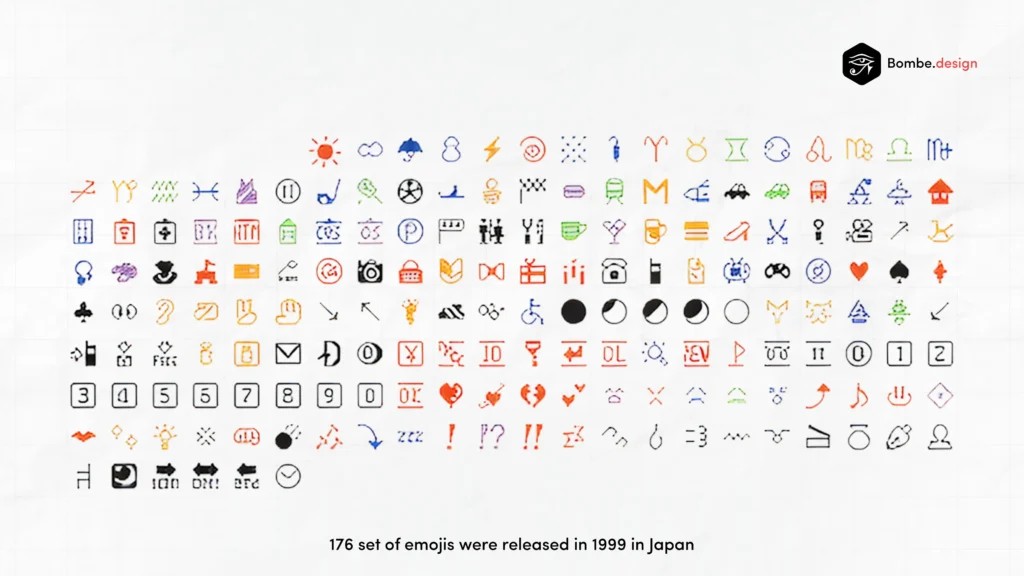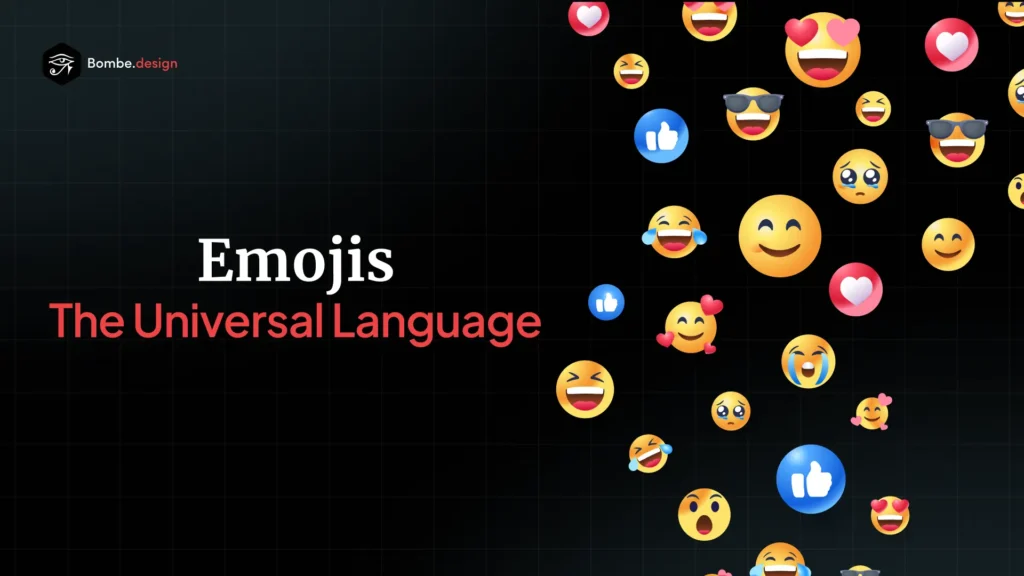Ever found yourself texting “LOL” but not actually laughing out loud? Or perhaps you’ve sent a heartfelt message that felt a little… flat without a visual cue? In today’s digital age, words alone often fall short. That’s where emoticons and, more powerfully, emojis step in! These tiny symbols have revolutionized how we express ourselves online, adding layers of emotion, tone, and context that are often lost in plain text.
They bridge the gap between face-to-face interaction and digital discourse, making our online conversations richer, more nuanced, and undeniably more human. Get ready to dive into the fascinating world of digital expressions!
Evolution and Development of Emoticons
Before the rise of visual emojis, the internet relied on emoticons, basic text combinations like 🙂 or 🙁 to simulate facial expressions.
The first widely acknowledged emoticons were proposed by computer scientist Scott Fahlman in 1982, who suggested using 🙂 and 🙁 to distinguish jokes from serious messages on early message boards.
These emoticons thrived in the early days of the internet, particularly in chatrooms and forums. They represented the first steps in creating emotion through text, a rudimentary but effective form of visual shorthand for tone.
Difference Between Emoji and Emoticons
This is where it gets interesting! While often used interchangeably, there’s a crucial distinction between emoticons and emojis.
Emoticons are purely typographic constructions, built using standard keyboard characters (like colons, hyphens, parentheses). Think of them as the original, DIY version of digital emotion. They require a bit of imagination to “see” the face:
- 🙂 (a smiling face)
- 🙁 (a sad face)
- :-O (a surprised face)
Emojis, on the other hand, are actual images – small, pre-designed graphical characters. They don’t require any mental rotation; they are immediately recognizable icons. Emojis are a much broader set, encompassing not just faces but also objects, animals, food, flags, symbols, and much more. They are standardized digital characters, much like letters in an alphabet, each with its own unique code.
Think of it this way: an emoticon is like drawing a stick figure to represent a person, while an emoji is like having a ready-made photograph of a person. Emojis offer a far richer and more diverse vocabulary for digital expression, allowing us to convey complex ideas and emotions with a single tap.
Beginnings of Unicode Emoji
The first emoji set appeared in 1997 on a Japanese phone (SoftBank’s SkyWalker DP-211SW) with 90 monochrome icons, including the now-famous “poop” emoji. However, emojis gained real momentum with Shigetaka Kurita’s 176-color emoji set in 1999 on NTT DoCoMo’s i-mode platform widely recognized as the first successful emoji set.
The turning point came in 2010 when the Unicode Consortium the body responsible for standardizing all digital text officially integrated emojis into the Unicode Standard. This allowed emojis to work consistently across different devices and software, creating a shared language for digital expression. Each emoji is assigned a unique Unicode code point ensuring, for example, a 😂 on an iPhone will still appear (albeit visually different) on Android or Windows.

Emoji Communication Problems
While emojis help create emotional resonance, they’re not without issues:
Inconsistency Across Platforms
A simple smile can look friendly on Apple but awkward on Samsung. This inconsistency can skew the intended emotional tone.
Cultural Interpretation Variance
Gestures and objects mean different things across cultures. For example, the 🙏 emoji may signify “thanks” in India but “prayer” in other regions.
Miscommunication
Overuse, misuse, or differing interpretations can dilute clarity, especially in professional settings. What feels playful to one might seem disrespectful to another.
Accessibility Concerns
Not all screen readers interpret emojis well, leading to communication barriers for visually
impaired users.
Unicode Support Considerations
Emoji updates are governed by the Unicode Consortium, which continuously expands the Unicode Standard. The latest version, Unicode 16.0, was released in June 2024, with Unicode 17.0 expected mid-2025. These updates introduce new emojis, skin tone options, gender variations, and technical refinements like zero-width joiners (ZWJ) for combining characters.
How Updates Reach Users:
Once Unicode approves a new emoji set, major tech companies like Apple, Google, Microsoft, Meta, and Samsung design their own versions and deliver them through OS and app updates. Until these updates are installed, users will see missing boxes or question marks instead of the latest emojis.
For developers, staying current with Unicode is crucial to ensure full support for emoji diversity and inclusivity across platforms.
Implementation by Different Platforms and Vendors
This is where the magic (and sometimes the frustration) happens! While Unicode provides the blueprint, how an emoji looks is entirely up to the operating system or application you’re using.
- Apple: Known for its distinct, often glossy, and highly expressive emoji designs. Apple emojis are widely recognized and influential.
- Google (Android): Google’s emoji designs have evolved significantly over time. They’ve moved from their initial “blob” style to more standardized, human-like representations, generally aiming for clarity and universality.
- Samsung: Samsung often has its own unique take on emoji designs, which can sometimes differ notably from Apple or Google, leading to those moments of confusion we discussed earlier.
- Microsoft: Microsoft’s emoji designs, particularly on Windows, have also undergone transformations, often having a slightly more illustrative or playful feel.
- Facebook/WhatsApp/X (formerly Twitter): These platforms often use their own custom emoji sets to ensure a consistent experience within their ecosystems, regardless of the user’s device. This means an emoji sent on WhatsApp will look the same to all WhatsApp users, even if their phone’s native emoji set is different.
These differences in implementation are a constant reminder of the dynamic nature of digital communication. While Unicode strives for standardization, the artistic interpretation by various vendors adds a unique flavor to the emoji landscape, constantly shaping how we perceive and use these tiny, powerful symbols.
How Emojis Enhance User Experience?
Emojis play a vital role in enhancing user experience by adding emotional clarity, warmth, and relatability to digital interactions. Instead of delivering messages as dry, robotic statements, applications use emojis to humanize communication, making it feel more natural and conversational. Whether it’s guiding users through a process, confirming actions with a friendly ✔️, or celebrating achievements with 🎉, emojis help convey tone and intent visually, something words alone often fail to achieve in digital interfaces. They reduce cognitive load by offering instant recognition of emotions and actions, making applications feel more intuitive and less transactional.
Conclusion
The journey from : ) to 😊 reflects the digital world’s need for more human, expressive communication. Emojis have become a universal UX tool, softening digital interactions, adding clarity to tone, and creating emotional resonance in interfaces.
For UX designers, emojis are not just playful add-ons but strategic elements of user communication from shaping feedback loops, improving engagement, and building brand personality.
At Bombe, we leverage emojis thoughtfully across our designs to ensure users feel emotionally connected, understood, and engaged at every interaction point. Our goal is to create experiences that aren’t just functional but warm, human, and deeply interactive because we believe that great design speaks the user’s emotional language.
Book a Free UX Consultation with Bombe to Discover How We Can Elevate Your User Experience with Thoughtful, Engaging Design.
